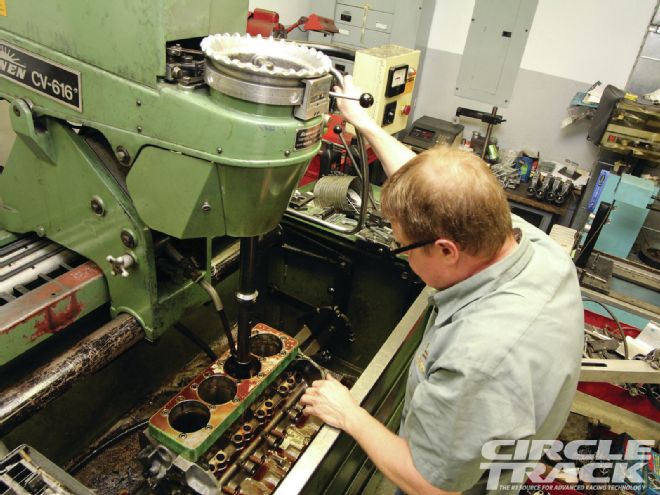
At Circle Track we’re all about tech, all the time. And at least a few times a year we’ll show you how to assemble your own engine from air filter to oil pan. But one area of tech we rarely touch on in depth is machine work of the engine block and cylinder heads. That’s because high-quality machine work requires very expensive equipment and specialized training. So honestly, even if they are going to handle engine assembly, most racers are better off handing the machining duties to their local engine builder.
But that doesn’t mean it isn’t necessary to understand what’s going on. Quality machine work that’s done with the care and precision required to hold tight to the tolerances required isn’t always a given--after all, you can wind up hiring the services of a machinist that’s poorly qualified and cuts corners just as easily as you can a plumber, house painter, or barber. The key to being confident that you are getting what you pay for is understanding what’s involved, and what separates good work from bad.
The first step is to talk to other racers. Does the engine builder or machinist have a good reputation at your racetrack? Teams that can consistently gather top finishes don’t get that way by accident. It’s a good bet that any company they are willing to associate with does quality work.
But there are often times when you can’t simply rely on a recommendation. Then you need to understand what you need, and be able to determine if you are getting what you paid for. There are a handful of critical machining processes that should be a part of every engine build. This time around, we are concentrating specifically on honing the cylinder bores.
Although they are often spoken of together, honing is not the same thing as boring the cylinders. Boring uses a carbide steel cutting tool to cut away metal from the cylinder bore. Honing, on the other hand, uses stones of varying coarseness to abrade away smaller amounts of the cylinder bore to improve concentricity (roundness, in plain English) and prep the surface of the metal.
Let’s take, for example, a new engine build. You will probably want to go ahead and bore the cylinder 0.030-inch oversize--to a final bore diameter of 4.030 inches--to take advantage of typical rules that allow a maximum engine displacement of 358 inches for both small block Fords and Chevrolets. That extra 0.030 of width doesn’t do much in terms of cubic inches, but it can really help improve compression ratio when stuck with flat-top pistons.
To get there, most machinists will bore the cylinders to 4.025 inches, leaving 0.005 of material to be honed away to get to the final 4.030 target. Honing is done in steps, beginning with a more coarse set of stones. Honing with the coarse stones will bring the bore size all the way to 4.027- to 4.0275-inches. The final 0.0025 is done in one or two more steps--with finer stones--that not only leaves a perfectly round cylinder bore, but also creates the surface finish on the cylinder walls.
When it comes to machining the cylinder bores, the surface finish of the walls is just as important of the roundness. Good honing work will create a "crosshatch" pattern that’s consistent along the length of the bore. The crosshatch is a fine texture of ridges and valleys in the metal that catches and helps hold a fine film of motor oil in the cylinder bores. This cuts down on the friction between the piston rings and the cylinder walls as the pistons move up and down the bores, and also keeps the rings from welding themselves to the block.
The end result of high-level honing work is an engine that seals up well so that an absolute minimum of combustion gasses leaks past the rings. That means more power making it to the crankshaft, and fewer contaminants in the oil for improved protection of the bearings, cam lobes, and other friction prone surfaces. Great honing work also helps the rings seal well so that you aren’t burning oil, either. So here are a few tips to make sure you are getting the best honing work possible.
Properly honing your cylinders is one of the first steps to building a solid race engine. Here’s how to make sure your machinist is doing it right.